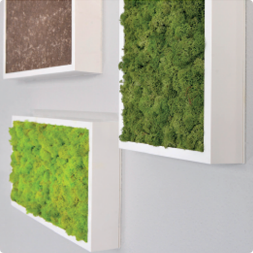The Ultimate Guide to Low-Maintenance Plants for Busy Professionals
In today’s fast-paced world, finding the time to care for plants can be difficult, especially for busy professionals. However, adding greenery into your space has numerous benefits, from improving air quality to boosting productivity. Fortunately, there are plenty of low maintenance plants that thrive with minimal attention. In this comprehensive guide, Plantz will introduce you to a carefully curated selection of low maintenance plants that are perfect for busy professionals like you.
Benefits of Indoor Plants
Before we dive into the list of low maintenance plants, let’s explore the many benefits of including indoor greenery into your workspace. Studies have shown that plants not only enhance the aesthetics of a room but also improve air quality by filtering out toxins. Additionally, they can reduce stress levels, increase focus and productivity, and even boost mood and creativity. By bringing plants into your environment, you’re not only adding a touch of nature but also enhancing your overall well-being.
Factors to Consider
While low maintenance plants require less attention than their high-maintenance counterparts, it’s important to consider a few key factors before making your choice. Factors such as lighting conditions, temperature, humidity, and space availability can significantly impact a plant’s well-being. By understanding these factors, you can choose plants that are best suited to thrive in your specific environment.
Top Low Maintenance Indoor Plants
- Snake Plant (Sansevieria): With its sword-like leaves and ability to tolerate low light conditions, the snake plant is a popular choice for busy professionals. It requires minimal watering and can withstand occasional neglect.
- ZZ Plant (Zamioculcas zamiifolia): The ZZ plant is known for its glossy, dark green leaves and ability to survive in various light conditions. It requires infrequent watering and is highly adaptable.
- Ficus Audrey (Banyan Fig) is a striking indoor plant with large, glossy, and deep green leaves. It closely resembles its cousin, the Ficus Lyrata (Fiddle Leaf Fig), but with more compact growth and slightly thicker leaves. This plant is relatively easy to care for, preferring bright, indirect light and regular watering. The Ficus Audrey adds a touch of elegance and a tropical vibe to any indoor space.
- White Bird of Paradise (Strelitzia Nicolai): this is a stunning tropical plant renowned for its large, paddle-shaped leaves and unique white flowers. This plant’s foliage resembles the shape of a bird’s beak and provides an eye-catching display of greenery. It thrives in bright, indirect light and requires moderate watering. The White Bird of Paradise brings a touch of exotic beauty and a sense of tropical paradise to any setting.
- Ficus Alii (Long-Leaved Fig): is an attractive houseplant characterized by its long, slender leaves that cascade gracefully. Unlike other ficus varieties, the Ficus Alii is more tolerant of lower light levels and fluctuating temperatures, making it a popular choice for indoor environments. It requires moderate watering and prefers bright, indirect light. With its elegant and airy appearance, the Ficus Alii adds a touch of tranquillity and sophistication to any space.
- Tarzan Plant ( Epipremnum aureum ‘Tarzan’): this is a vigorous and resilient vine that is well-suited for indoor hanging baskets or trained to climb up a support structure. It features heart-shaped, glossy green leaves with splashes of variegation, typically in shades of yellow or cream. The Tarzan Plant is relatively low maintenance, tolerating a range of light conditions and requiring moderate watering. Its trailing vines and attractive foliage make it a popular choice for adding lush greenery and a touch of natural beauty to any space.
- Chinese Evergreen (Aglaonema): Chinese evergreen plants are known for their attractive foliage and ability to tolerate low light conditions. They require infrequent watering and are excellent air purifiers.
Maintenance Tips
Although low maintenance plants require less care, they still need some attention to thrive. Here are a few essential maintenance tips to keep in mind:
- Watering: While these plants are less needy, it’s crucial to water them appropriately. Overwatering can lead to root rot, while underwatering can cause wilting. Find the right balance and adjust according to your plant’s specific needs.
- Lighting: Even low maintenance plants require adequate light for photosynthesis. Ensure they receive sufficient indirect sunlight or invest in artificial grow lights to support their growth.
- Fertilizing: Low maintenance plants generally require less fertilization. However, it’s still important to provide them with occasional nutrients. Use a balanced, water-soluble fertilizer according to the instructions on the packaging.
- Pruning: Regular pruning helps maintain the shape and health of your plants. Remove dead or yellowing leaves and trim excessive growth to keep your plants looking their best.
Adding Plants in Your Workspace
Now that you have learned about various low maintenance plant options and their care needs, it’s time to add them into your workspace. Here are some creative ideas:
- Desk Plants: Choose compact plants like succulents or small potted herbs to place on your desk or shelf.
- Hanging Plants: Utilize wall space by hanging trailing plants in macrame hangers or mounted planters.
- Vertical Gardens: If you have limited floor space, consider creating a vertical garden using wall-mounted planters or vertical shelving.
- Terrariums: Create a mini ecosystem with low maintenance plants enclosed in glass terrariums.
Adding low maintenance plants into your workspace is an excellent way to bring nature indoors without overwhelming your busy schedule. By carefully selecting the right plants and providing them with minimal care, you can enjoy the benefits of greenery while maintaining your productivity as a busy professional. Remember to consider lighting, temperature, and space availability before making your choice, and don’t forget to follow the maintenance tips to ensure your plants thrive. Enjoy the beauty and tranquillity that these low maintenance plantz can bring to your life!


















